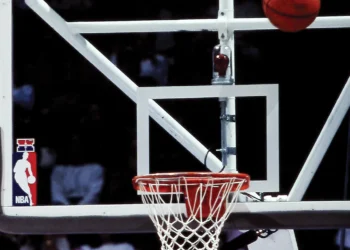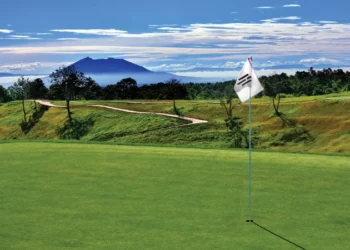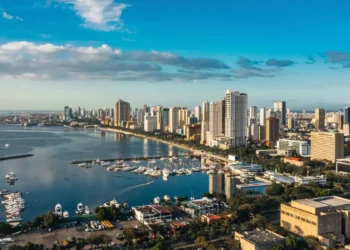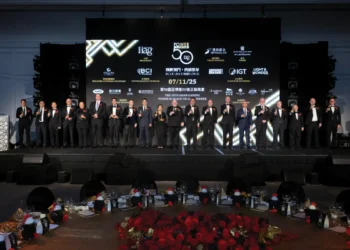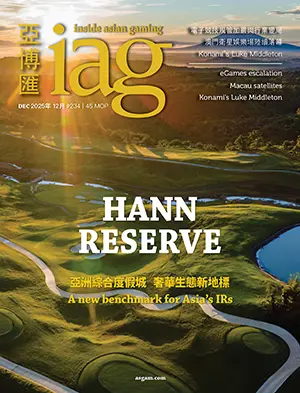ONEworks™ Business Development Director Tom Hall explains the workings of in-running sports betting
When comparing Asian and European sports bettors, there are probably more similarities than differences.
The similarities are obvious; Asian and European customers love to bet on football in the major European Leagues (the Barclays Premier League is by far the most popular with both sets of players) and increasingly through ‘in-running betting’ (IRB)—but more of that later.
The 1X2 market (home win/draw/away win) remains popular with both markets, and it’s still the Asian players who bet biggest—your typical European player also still prefers accumulators (or parlays) when compared to a typical Asian player. Culturally, Asians would tend to view pre-match betting as ‘betting blind’, without knowing team line-ups and formations, often preferring to see how a game unfolds before stepping in.
Other differences are, perhaps, more subtle; Asian players still prefer the ‘over-under’ goals markets more than their European counterparts, although even that difference is altering, as we increasingly see more European bettors playing in these markets, frequently as an adjunct to the 1X2 market. Certainly, with recent games involving top EPL sides sharing seven, eight and even nine goals, you can see the attraction to European customers increasingly wanting to play these markets.
But the biggest single similarity of both groups remains the absolute devotion to betting in-running, and it’s certainly no exaggeration to describe this recent growth as spectacular.
If we define IRB as any sports bet struck after the start of the sporting event itself, then up to 80% of all betting revenues made on the event are now ‘in-running’.
Although IRB started in Asia perhaps ten years ago, when it first arrived in Europe, mid-way through the last decade, it was perhaps difficult to forecast its explosive growth there.
In Europe the small number of events and markets—plus manual input by traders and odds-setters—led to human error and thin margins for the operator. It was also clear that the sports-betting engines many of the operators were using simply weren’t designed for this new application.
In many cases, the early-adopter European operators didn’t have the prices they needed, or the trading expertise to adapt to the new sector, often used initially by “savvy, value-seeking” customers.
Nonetheless, it was easy to see why consumers loved this new opportunity, and the fundamental reasons for its growth.
Firstly, we’ve seen an explosion in the amount of live sport being broadcast, whether on satellite TV, over the Internet or via the tailor-made live streaming most operators now provide on their sites.
This live-streaming sector for sports betting was in its infancy just a few years ago; now, some of the larger sports rights aggregators are making available more than 5,000 live sports events, up nearly 50% from just two years ago. Football, tennis and basketball take the lion’s share of events and thus betting revenues.
Next, we’ve seen a huge uplift in both the range of markets and the ‘depth’ of subsequent prices offered on those markets, aided by smarter trading tools.
This has led to a fundamental change of behaviour by consumers, and not just the ‘early-adopters’; the increasing accessibility of live sport through mobile, tablet and smartphone apps, has contributed to its extraordinary growth.
In 2006, two listed European operators started providing analysts and investors their IRB share of total sports-betting revenues, realising the growth potential of this new sector.
Then, it represented considerably less than 10%; last year, that had risen to over 50%, and both listed operators forecast this to be “above 75%” for 2012 and beyond.
Just a few years ago, around 80% of bets on an individual football match would have been placed BEFORE the kickoff; now it’s around the same percentage being placed AFTER the game starts, which is a remarkable shift in consumer preference.
Margins have improved too, from perhaps 2%-3% gross win five years ago, to a far healthier 5%-6% nowadays. This improvement has been achieved through “less guesswork, less human error, better tools and more accurate prices”, according to one respected industry analyst.
More volume, and improving profits means it’s also easy to see why operators are continuing to invest in new betting platforms, better prices and smarter trading tools to sustain the growth.
The trading director of any major (or minor) sportsbook, wherever they are based or licensed, now needs a robust, scalable and proven sports-betting platform to compete effectively, plus reliable prices and smarter trading tools.
So with as much as 80% of the global IRB market being bet on football, it’s also essential to ensure that same trading director has both the range and depth of markets and prices on the number one sport.
In Asia, IRB has always been a key feature in the market, with the first in-play betting opportunities arriving perhaps ten years ago, initially on the top European football leagues, and dominated, in the early days, by both Asian handicaps and the always-popular “under/over” goal markets.
Due to its Asian origins, ONEworks™ offers an unparalleled range of in-play events and markets, with 150,000 concurrent bettors at peak hours, 18,000 in-play markets and over 5,000 football events per month. All of this is supported through an exclusive relationship we have with an Asian-based service provider which has a team of 700 traders—one of the biggest, if not the biggest—sportsbook trading teams in the world, who also add value and expertise on more than 30 other sports.
IRB on football is already popular, fast-growing and increasingly profitable. To compete effectively, you need as many markets as your competitors, if not more, and no-one offers more in-running football markets than ONEworks™.
Built for exceptional profitability, efficiency and reliability, ONEbookSM from ONEworks™ is a special breed of sports betting platform.
By Tom Hall, Business Development Director, ONEworks™
Tom Hall is recognised as one of the world’s leading experts on interactive gaming. He is a regular speaker at industry conferences and investor forums and has been actively involved in gaming since 2002.
Mr Hall was the founder in 2002 of AsianLogic—one of the pioneers of online gaming and betting in Asia. He remains as non-executive Chairman of what is one the largest and most established operators in the region. In parallel to AsianLogic, Mr Hall was instrumental in the development of Playtech, the world’s largest supplier of software for online betting. He joined the Playtech board in 2002.
He subsequently became the CEO, with responsibility for overseeing global customer growth. He then swapped over to Global Business Development Director shortly before Playtech’s 2006 flotation on the London Stock Exchange. He remained as a Playtech director until 2010. That year he joined ONEworks™ —one of the world’s largest sports betting platform providers—as Global Business Development Director. ONEworks is at Stand #4245 during ICE 2012.









